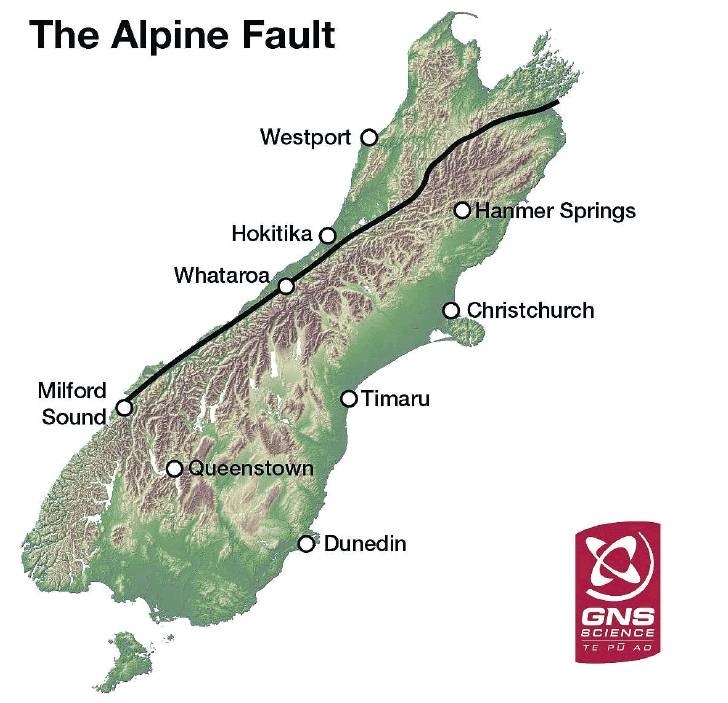
More than 30 personnel from Fire and Emergency New Zealand, St John, police, SICON, Civil Defence and volunteers from Selwyn Emergency Response recently met to share expertise and knowledge on their equipment and skills.
The event was organised by the Selwyn District Council emergency management team.
It was one of a series of such events and training sessions, after research was released in April showing a 75 per cent chance of a rupture on the Alpine Fault within the next 50 years.
Previously the chance was believed to be 30 per cent. There is an 82 per cent chance the earthquake will be magnitude 8 or higher.
The area of the fault that the research relates to is the southern and central segments, which stretch from Milford Sound to Hokitika, bordering the Selwyn district.

"It would impact on almost every facet of life, in particular the ability to reach areas cut off by large slip events across most state highways linking the east and west," Robinson said.
This included State Highway 73 in Selwyn.
After the meeting, Robinson said the high level of planning being undertaken by emergency personnel was something that would continue for years to come.
"The urgency of it has become quite clear, but what we need to do and how we need to do it hasn’t really changed,” Robinson said.
He said shaking on the plains in Selwyn was expected to last one to two minutes.
It would not be high intensity shaking, such as that in the February 22, 2011, earthquake. Rather it could feel similar to the shaking level felt on the plains during the September 4, 2010, quake.
Damage to buildings would mostly be superficial, with no widespread building collapse.
On the plains, older water piping could be damaged, and power could be lost for anything from a couple of hours to three days.
The greatest effect in the district would be in the foothills and main divide with rupturing of pipelines, roads and landslides isolating communities.
Selwyn District Council civil defence manager Al Lawn added that the research had shown the fault would most likely erupt in our lifetime or our children’s lifetime. The event would have a severe impact.
“Because of this we are constantly working to make sure our plans are up to date and our relationships are strong among the agencies who will be responding to the earthquake,” Lawn said.
Selwyn Mayor Sam Broughton reminded residents to be prepared.
"Knowing your neighbours and having a strong community are a huge part of getting through any type of emergency," Broughton said.
He advised any residents who had not received a copy of the booklet 'Are You Ready? A guide to emergency preparedness in Selwyn' to pick one up free from a Selwyn library or the district council headquarters in Rolleston.
Additionally, sign up to the district council’s Selwyn Gets Ready free emergency alerting system.
It sends text and email alerts to subscribed households in the event of an emergency. It is also used to identify those who might need extra assistance and those who have skills and resources to help their neighbours.
People can sign up at selwyn.getsready.net.
More information on the Alpine Fault can be found here.
- Drop, Cover and Hold – This stops you being knocked over, makes you a smaller target for falling and flying objects and protects your head, neck and vital organs. Practice the routine with your family.
- Prepare – Have a family or household chat to make an emergency plan to look after yourself and your loved ones for at least three days or more. Plan for when at home, at work, at school, wherever you might be if a disaster struck. Have essential supplies stored and ready, including at least three days’ supply of water for everyone in your household. Visit getready.govt.nz to make a plan and get simple tips on how to get ready for an emergency.
- Make your home safer – Make sure objects that could fall and hurt people are either placed somewhere else or fixed and fastened. Visit eqc.govt.nz/be-prepared for tips.












